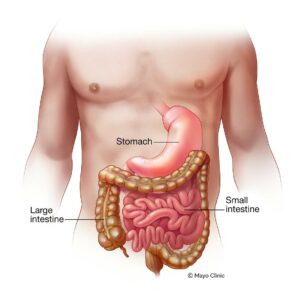A crown on a tooth looks like a cap that covers the entire visible part of the tooth. A dental crown, also known as a tooth cap, is a dental restoration that fits over the visible portion of a tooth, restoring its shape, size, strength, and appearance.
Crowns can be made from a variety of materials, such as porcelain, metal, or a combination of both. They are custom-made to match the color and shape of the natural teeth, providing a seamless and natural appearance. Dental crowns can be necessary to protect a weak tooth, restore a broken or severely decayed tooth, support a dental bridge, or cover a dental implant.
They are designed to be durable and long-lasting, ensuring the functionality and aesthetics of the tooth they cover.
Table of Contents
What Is A Dental Crown?
A dental crown is a custom-made cap that is placed over a damaged or decayed tooth. It is designed to restore the tooth’s shape, size, strength, and improve its appearance. Dental crowns are commonly used to protect weak teeth, restore broken teeth, cover dental implants, and provide support to teeth after root canal treatment.
Definition And Purpose
A dental crown is a dental prosthetic that fits over the entire visible portion of a tooth. It is typically made from materials such as porcelain, ceramic, metal alloys, or a combination of these materials. The purpose of a dental crown is to strengthen and protect a damaged tooth, allowing it to function properly again. It can also improve the tooth’s appearance, restoring its natural shape, color, and alignment.
Common Materials Used
| Material | Advantages | Disadvantages |
|---|---|---|
| Porcelain or ceramic | Natural-looking, biocompatible | May be less durable than metal |
| Metal alloys | High strength, longevity | Less aesthetically pleasing |
| Porcelain-fused-to-metal | Durable, natural-looking | May show metal at the gumline over time |
When Is A Dental Crown Necessary?
When a dental crown becomes necessary, it is usually due to common dental issues that require restoration. Some of these issues include tooth decay that has progressed beyond the point where a filling can be used, cracked or fractured teeth, severe tooth discoloration, and weakened teeth.
Indications that a dental crown may be needed include experiencing tooth pain or sensitivity, visible cracks or chips in the teeth, extensive tooth decay, discoloration that cannot be resolved with teeth whitening treatments, and previous dental work that needs reinforcement. A dental professional will assess the condition of the teeth and determine if a dental crown is the appropriate solution.
A dental crown is designed to restore the shape, size, and functionality of a damaged tooth. It is typically made from materials such as porcelain, metal, or a combination of both. The crown is carefully crafted to closely resemble the natural teeth, both in appearance and function. It is permanently bonded to the existing tooth or dental implant to provide long-lasting results.
Initial Consultation And Examination
During your initial consultation, your dentist will carefully examine your teeth and gums to assess your oral health. This may include taking X-rays and impressions of your teeth.
The dentist will evaluate the condition of your teeth, looking for any signs of decay, damage, or infection. They will also examine your gums to check for any signs of gum disease. This assessment is crucial in determining the appropriate treatment plan for your needs.
X-rays provide a detailed view of your teeth and jawbone, allowing the dentist to identify any underlying issues that may not be visible to the naked eye. Impressions are used to create an accurate model of your teeth, which can be used to fabricate a custom dental crown that fits perfectly.
Preparing The Tooth For A Crown
When it comes to preparing a tooth for a crown, there are a few important steps that need to be taken. The first step is tooth shaping and reduction. This involves carefully reshaping the tooth so that the crown can fit properly. It may involve removing some of the natural tooth structure to create enough space for the crown.
Once the tooth has been shaped, a temporary crown may be placed. This temporary crown serves as a placeholder while the permanent crown is being made. It helps to protect the tooth and allows for normal functioning until the final crown is ready to be placed.
Overall, the process of preparing a tooth for a crown requires precision and careful attention to detail. It is important to work with a skilled dentist who can ensure that the crown is properly fitted and that the tooth is adequately prepared.
Crown Fabrication
A dental crown is a type of dental restoration that covers a damaged or decayed tooth to restore its shape, strength, and aesthetics. There are several types of dental crowns available:
| Type | Description |
|---|---|
| Porcelain | Aesthetically pleasing and matches the color of natural teeth. |
| Composite | Made from a tooth-colored resin material. |
| Metal | Durable and long-lasting, but less aesthetically pleasing. |
| Ceramic | Provides a natural appearance and is resistant to staining. |
The process of fabricating a dental crown involves several steps:
- 1. Consultation and examination of the tooth.
- 2. Impressions of the tooth to create an accurate mold.
- 3. Preparation of the tooth by removing decay or damaged portions.
- 4. Temporary crown placement while the permanent crown is being fabricated.
- 5. Customization of the permanent crown in a dental laboratory.
- 6. Final fitting and adjustments of the crown.
- 7. Cementing the crown onto the prepared tooth.
Now you know the different types of dental crowns and the process of custom fabrication. The appearance of a crown will vary depending on the type chosen and the expertise of the dentist.

Credit: www.hellomagazine.com
Crown Placement And Final Adjustments
When a crown is placed on a tooth, it is important to ensure its permanent placement and make final adjustments for a proper bite and fit.
During the process, the dentist carefully evaluates the bite and fit of the crown. This involves checking the alignment and occlusion of the teeth to ensure proper functionality and comfort. Any discomfort or interference with the bite is addressed, and additional adjustments are made as necessary.
The aim is to achieve a natural-looking crown that blends seamlessly with the surrounding teeth. The color and shape of the crown are matched to your existing teeth, making it virtually indistinguishable.
Final adjustments are made to guarantee optimal aesthetics and functionality. The dentist may also adjust the height and shape of the crown to enhance its fit and alignment with neighboring teeth. This meticulous process ensures that the crown on your tooth is both visually appealing and functional.
Physical Appearance Of A Dental Crown
A dental crown is a prosthetic tooth cap that is placed over a damaged or decayed tooth to restore its function and appearance. The physical appearance of a dental crown can vary depending on individual preferences and needs.
Color, shape, and size options play a significant role in achieving a natural-looking aesthetic. Dental crowns can be made from different materials, including porcelain, ceramic, metal, or a combination. The chosen material and shade will determine the crown’s color and how well it blends with the natural teeth.
The shape and size of the crown are carefully designed to match the existing teeth, ensuring proportion and symmetry. ADA-approved dental laboratories use advanced techniques and technology to create crowns that mimic the natural tooth structure, enabling a seamless integration into the smile.
With their ability to mimic the natural appearance of teeth, dental crowns not only restore functionality but also provide a pleasing cosmetic effect. The result is a crown that looks and feels like a real tooth, enhancing the overall appearance and boosting confidence.
Differentiating A Dental Crown From Natural Teeth
A dental crown is a prosthetic device placed over a damaged tooth to restore its shape, size, strength, and improve its appearance. One key aspect in differentiating a dental crown from natural teeth lies in their texture and translucency variations. Crown materials, such as porcelain or ceramic, are crafted to closely resemble the natural color and shine of teeth, making them almost indistinguishable. However, upon close inspection, variations may be noticed in terms of texture and how light passes through the crown compared to natural teeth.
Visual cues and dental morphology also play a role in distinguishing a dental crown from natural teeth. Dental crowns are often meticulously crafted to fit seamlessly with adjacent teeth, mimicking their shape and alignment. Additionally, the porcelain used in crowns can sometimes create a more reflective surface compared to the natural enamel present on regular teeth.
How Does A Dental Crown Feel?
When you have a dental crown, it is important to know how it will feel in your mouth. The sensation while eating and speaking may take some time to get used to. Initially, you may feel a slight discomfort as you adjust to the new crown. Some people experience sensitivity to hot and cold temperatures, but this usually subsides over time.
As you continue to wear the crown, you may notice that it feels like a natural part of your tooth. The crown is designed to fit securely and comfortably, allowing you to eat and speak without any issues. It is important to maintain good oral hygiene practices, including regular brushing and flossing, to keep your crown in good condition.
Oral Hygiene Practices For Dental Crowns
A dental crown is a common restoration used to cover a damaged or decayed tooth. It acts as a protective cap, resembling the shape and color of a natural tooth. Crowns can be made from various materials, including porcelain, metal, or a combination of both.
To maintain good oral hygiene with dental crowns, it’s essential to follow proper brushing and flossing techniques. Use a soft-bristled toothbrush and fluoride toothpaste to gently clean all surfaces of the crown and surrounding teeth. Pay extra attention to the gumline where the crown meets the natural tooth.
Flossing is equally important. Carefully insert a strand of floss between the teeth and slide it up and down in a C-shape motion. This helps remove plaque and debris from hard-to-reach areas, ensuring the longevity of your dental crown.
In addition to maintaining good oral hygiene practices, it’s important to avoid certain foods and habits that could potentially damage the crown. These include hard or sticky foods, biting on non-food objects such as pens or nails, and using the teeth as tools.
By following these oral hygiene practices and being mindful of what you eat and do, you can keep your dental crown looking and functioning its best for many years to come.
Regular Dental Check-ups And Cleaning
Regular dental check-ups and cleaning play a crucial role in maintaining good oral health. Professional maintenance is of utmost importance as it helps to detect and address potential issues before they become major concerns. During a regular dental check-up, the dentist will carefully examine your teeth and gums, looking for any signs of decay, gum disease, or other dental problems. They will also perform a professional cleaning, which includes removing plaque and tartar build-up that cannot be achieved through regular brushing and flossing. By visiting your dentist regularly, you can ensure that any potential problems are identified and treated early on, preventing further complications. This proactive approach to dental care can save you from future dental pain, discomfort, and costly treatments. So, make sure to prioritize your regular dental check-ups and cleaning appointments to keep your smile healthy and beautiful.
Extending The Lifespan Of Dental Crowns
Proper care and maintenance can significantly enhance the longevity of dental crowns. Here are a few tips to ensure their long-term durability:
- Practice good oral hygiene by brushing your teeth at least twice a day and flossing daily. This helps prevent plaque buildup and dental decay, which can weaken the tooth supporting the crown.
- Avoid biting or chewing on hard objects, such as ice or pen caps, as this can cause fractures or damage to the crown.
- Wear a mouthguard during physical activities or contact sports to protect your teeth and crowns from potential trauma.
- Avoid grinding or clenching your teeth, as this can put excessive pressure on the crown and lead to damage. If you have a teeth grinding habit, consult your dentist about using a nighttime splint or mouthguard.
- Schedule regular dental check-ups and professional cleanings to ensure that the crown is in good condition and that any underlying issues are addressed promptly.
| Cause | Description |
|---|---|
| Dental decay | If the underlying tooth develops decay, it may require removal of the crown for appropriate treatment, followed by replacement. |
| Frequent trauma | Repeated physical trauma to the crown may result in cracks or fractures, necessitating crown replacement for both aesthetic and functional reasons. |
| Poor fitting | If the crown does not fit properly, it may cause discomfort, gum irritation, or recurrent infections, indicating the need for replacement. |
Frequently Asked Questions For What Does A Crown On A Tooth Look Like
What Is A Dental Crown And Why Is It Used?
A dental crown is a cap-like structure placed over a damaged tooth to restore its function, shape, and appearance. It is used to protect weak teeth, restore heavily decayed or broken teeth, cover dental implants, and improve aesthetic appeal.
How Long Does A Dental Crown Last?
The lifespan of a dental crown depends on various factors such as oral hygiene, biting forces, and overall dental health. With proper care and regular dental check-ups, dental crowns can last between 10 to 15 years on average.
What Does A Dental Crown Look Like?
A dental crown is custom-made to blend in with your natural teeth. It can be made from various materials like porcelain, ceramic, metal, or a combination. The crown is designed to match the color, shape, and size of your existing teeth, giving it a natural appearance.
Conclusion
To sum up, a dental crown is a durable and aesthetically pleasing dental restoration that resembles the natural shape and color of a tooth. It provides protection and support to a damaged tooth, improving its functionality and appearance. With advancements in dentistry, crowns are now available in various materials that offer different benefits.
Understanding what a crown on a tooth looks like can help patients make informed decisions about their dental care. So, if you have a damaged tooth, consult with your dentist to explore the possibility of getting a crown for a confident and healthy smile.








